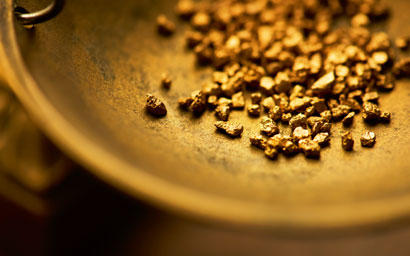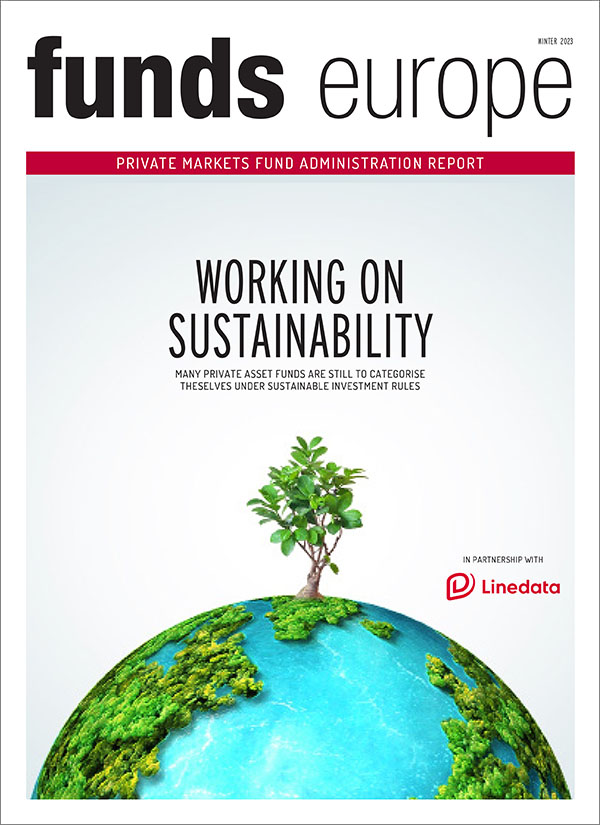As 2016 draws to a close, the picture for ETFs is one of climbing assets and inflows, but a flurry of political and economic headwinds has buffeted areas of the market, writes Kit Klarenberg.
In many ways, the European ETF market ends 2016 as it began. For one, it’s almost as concentrated as it was a year ago – the top ten providers account for more than 90% of total European assets, with iShares alone cornering 46.9% of the market.
In all, the top three ETF providers, out of a total of 49, account for two-thirds of European ETF assets. This concentration persists despite the appearance of several new providers in the market, including IS Investment and Fullgoal.
Secondly, ETF assets have continued their upward trajectory, and the continent remains the world’s largest ETF growth market, although assets have ascended slowly, and from a low base. ETFGI data indicates ETF assets reached a record high of €530 billion in the third quarter of the year, with October marking the 25th consecutive month of net inflows into European ETFs.
Furthermore, launches have continued apace, with more than 200 debuting on the market between January and November this year. There are now 1,600 ETFs based in Europe, which represents over a quarter of the world’s total ETF market.
BREAK NEW GROUND
Chris Mellor, executive director of equities product management at Source, notes most of these products track classic market segments – equities, fixed income, commodities, etc. Within these well-established asset classes, though, some new ground has been broken.
“The largest growth has been in currency-hedged equity and broad basket commodities, with 25 and eight launches respectively,” he says.
“There have also been new funds launched in the market-neutral space, which is previously uncharted territory for Europe. There were two African equity ETF launches, bringing the total to nine, and the first European Israel-focused ETF.”
One consistent product trend over much of 2016 has been the renaissance of gold, with many investors seeking to access the asset via ETFs, dragging net longs of gold to an all-time high. Conversely, short gold ETCs have suffered significantly since the start of the year.
As is invariably the case, the gold rush was powered by fears of impending heightened market volatility – the referendum on Britain’s membership of the European Union and the US presidential election promised to deliver much tumult. The June 23 plebiscite’s shock result certainly spooked investors – ETF Securities saw a £1 billion (€1.2 billion) turnaround across its product range on June 24, a nigh-on quadruple leap from average daily rates of £270 million.
As the US election approached, flows into gold products gathered pace; Mellor says in the four weeks leading up to November 8, Source reaped inflows of around €500 million into its gold ETF.
However, this trend now appears to be reversing. On election night itself, prices briefly reached $1,338 per ounce, but ever since Donald Trump’s victory, gold ETFs have floundered. James Butterfill, head of research & investment strategy at ETF Securities, says gold ETFs saw outflows of about 100 metric tons in the three weeks following the election, with gold ETF holdings equalling 1,893 tons on November 30, down from the 1,985 tons in August.
This reversal in sentiment seems somewhat strange, given bond yields are rising on expectations of tax cuts and deficit spending by the new administration, which raises the prospect of sizeable inflation – the locomotive of gold price growth. Butterfill attributes this shift to market optimism that US growth will recover under Trump’s plans, pushing dollar prices higher. As gold and the dollar move inversely, gold has naturally suffered. However, Butterfill believes this buoyancy to be undue.
“It’s risky to assume Trump will be able to enact all his reforms, but the market is behaving as if he will. Once Trump is in the White House, it will become evident he’ll struggle to enact many of them, particularly as they entail raising the debt ceiling,” he says.
NO CRYSTALL BALLS
Fannie Wurtz, managing director of Amundi ETF, says several segments of the ETF market received a strong boost after Trump’s victory; for instance, US equity products garnered €1.9 billion in inflows over the three weeks following November 8.
Conversely, emerging markets have been battered in the wake of November 8, with both equity and fixed income ETFs suffering big outflows. In sector terms, equity region emerging and emerging markets world ETFs lost €883 million and €1.8 billion between November 8 and 23. As Wurtz explains, this exodus is powered by fears that newly elected president Donald Trump will renegotiate foreign trade agreements.
“It remains to be seen how the outcome of the election will impact global markets in the longer term, given that Trump does not take up his new role until January, but markets are likely to remain volatile as investors await more clarity,” Wurtz adds.
In Europe, 2017 promises to deliver yet more uncertainty and volatility. In all, 70% of the continent by GDP has elections in 2017, at a time when insular populism is at its highest levels in decades. What does this mean for European ETFs, and how should ETF investors react?
For Larry Swedroe, author of 15 books on passive investing, the answer to the latter is simple – they should do nothing. He sees 2016’s numerous political shocks as a palpable demonstration that investors should ignore all forecasters, and not be distracted or influenced by events.
“First, the gurus said Trump had no chance of winning the nomination. Then, they said he had no chance of winning the election. Then, they predicted markets would crash if he won the election. On every point, they have been proven completely and utterly wrong. There are no crystal balls in investment, just noise – so don’t believe anyone who claims to possess the former, and simply ignore the latter,” he says.
“It’s interesting, because most investors, when asked, say their investment idol is Warren Buffett, but they consistently fail to follow his investment philosophy. Do you think he reacted at all to the election result?”
He stresses ETFs are fundamentally long-term products, and should be used by investors to build a broad, globally diversified portfolio. From there, investors should “sleep” on that portfolio for at least 20 years.
The failure of some ETF investors to adopt this approach, he says, is largely attributable to the number of vehicles being launched that actively encourage intraday trading (such as short and leveraged vehicles), and the proliferation of esoteric products that track the performance of niche industries, such as restaurants or computer gaming.
©2016 funds europe





